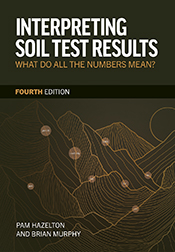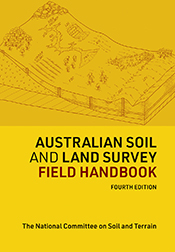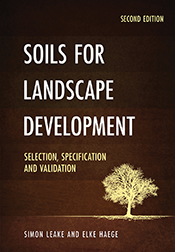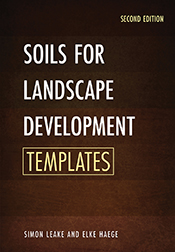Interpreting Soil Test Results
What Do All the Numbers Mean?
Fourth Edition By: Pam Hazelton, Brian MurphyThe fourth edition of the essential quick reference guide to interpreting a wide range of soil tests.
Interpreting Soil Test Results is a practical reference enabling soil scientists, environmental scientists, environmental engineers, land holders and land managers to understand and interpret soil results. + Full description
In this new edition the entire acid sulfate soil section has been replaced with the most current information. The interpretation of some soil chemistry tests has been updated, such as soil phosphorus values based on phosphorus buffering capacity, the influence of sparingly soluble salts and chloride on interpreting salinity data and EC values, and some critical values for soil chloride levels added. The sodicity section has been revised to include the latest information and understanding of sodicity. The soil organic carbon section now includes the latest information and understanding on soil organic carbon. Intensive sampling in small areas and a new section on pipeline corrosion have been added. The soil contamination chapter has been revised, providing the latest understanding and critical values, and a new section on PFAS chemicals added.
Interpreting Soil Test Results is an important reference for students of soil science, environmental science and environmental engineering, as well as for professional soil scientists, environmental scientists, engineers and consultants and for local government agencies. It also offers a reference for legal professionals in land and environment cases.
- Short descriptionReviews
Praise for the previous editions:
"Interpreting Soil Test Results is a handy compendium. Soil scientists who write for clients and the clients who read their reports, both in Australia and elsewhere, should find this book valuable."
R. Webster, European Journal of Soil Science 58(5), July 2007
Details
Paperback | May 2025 | $ 69.99ISBN: 9781486319367 | 200 pages | 245 x 170 mm
Publisher: CSIRO Publishing
Illustrations
Features
- A quick reference guide to interpreting a wide range of soil tests.
- Features a list of soil properties for which soil testing may be required. Users will be able to judge what soil tests are available for various purposes and how the results of these tests may be interpreted.
- Includes a comprehensive list of reviewed and updated references for soil properties and interpretation of results for those who wish to access more detailed information.
Contents
ForewordAbout the authors
Preface
Acknowledgments
Introduction
1 Soil sampling issues: aspects of design and implementation of soil investigations
2 Soil physical properties
3 Soil properties and soil behaviour for engineering
4 Soil erodibility and erosion hazard
5 Soil chemical properties
6 Organic matter content of soils
7 Application of wastewater and waste materials
8 Soil contamination: some considerations
9 Units and conversions
10 General and technical suggested references
References
Appendix 1
Index
View the full table of contents (PDF, 55 KB).
Authors
Dr Pam Hazelton has worked as a soil scientist for over 35 years. She gained her PhD from the University of NSW for her research on the morphology and genesis of scald soils in arid regions. In recent years, Pam’s interests have been in urban and coastal soils with an emphasis on environmental engineering.
Dr Brian Murphy has worked as a soil scientist for over 30 years with a strong focus on applied soil science. He obtained his PhD in 1999 from the University of NSW for his work on soil structure in cropping systems. Brian’s practice has a strong focus on the application of soil science to agriculture, land management, carbon sequestration, hydrology, salinity and urban land use.








